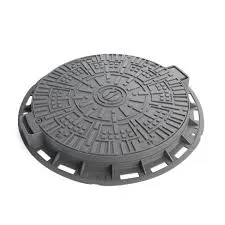Electric Actuated Butterfly Valve for Precision Flow Control in Industrial Applications
Electric Actuated Butterfly Valve A Comprehensive Overview
The electric actuated butterfly valve is an essential component in modern fluid control systems, offering enhanced efficiency and reliability. This valve type combines the simplicity of the butterfly valve mechanism with the precision of electric actuation, making it a popular choice in various industries, including water treatment, oil and gas, pharmaceutical, and food processing.
Understanding Butterfly Valves
Butterfly valves are characterized by a circular disc that rotates around a shaft to regulate fluid flow. When the disc is perpendicular to the flow, it obstructs it, and when parallel, it allows flow. The design benefits from a compact structure, which facilitates installation in tight spaces, and requires minimal space for operation, distinguishing it from other valve types like gate or globe valves.
Electric Actuation Enhancements in Control
Electric actuators converted mechanical motion into controlled electric motions, allowing butterfly valves to be operated remotely or automatically. The combination of an electric actuator with a butterfly valve introduces several advantages
1. Precision Control Electric actuators can be precisely controlled for opening and closing positions, allowing for exact flow management, which is particularly valuable in processes requiring fine-tuning.
2. Remote Operation These valves can be operated from a distance, using various control signals (such as a switch or control panel), enhancing safety and efficiency, especially in hazardous environments.
3. Power Source Using electric power means no need for complicated pneumatic or hydraulic systems, reducing the overall maintenance requirements and simplifying the installation process.
4. Speed and Efficiency Electric actuators typically operate faster than mechanical models, allowing for quicker response times in system adjustments, which is critical in dynamic industrial processes.
Applications of Electric Actuated Butterfly Valves
Due to their versatility, electric actuated butterfly valves are widely employed in various applications
electric actuated butterfly valve

1. Water Treatment Plants These valves help regulate flow and maintain pressure within the treatment systems, ensuring effective filtration and chemical dosing.
2. Oil and Gas Industry Here, they control the flow of various hydrocarbons, withstand high pressures, and provide essential safety measures through quick shut-off capabilities during emergencies.
3. Food and Beverage Processing In these applications, the valves ensure compliance with hygiene standards while allowing for precise control over the liquid and gas flows.
4. HVAC Systems These systems utilize electric actuated butterfly valves to maintain airflow and temperature control efficiently.
Advantages Over Traditional Valves
Electric actuated butterfly valves outshine traditional mechanical valves in several aspects
- Reduced Weight Being lighter than other valve types with comparable pressure ratings means easier handling and lower structural support requirements. - Lower Friction Losses Thanks to the streamlined disc design, these valves typically exhibit lower pressure drops within the piping system, which contributes to overall energy efficiency.
- Longevity and Durability Electric actuators generally offer greater durability and reliability, especially in extreme environments, reducing the need for frequent replacements.
Challenges and Considerations
While electric actuated butterfly valves offer numerous benefits, certain challenges must be considered. The initial costs may be higher than manual valves, and proper electrical infrastructure is necessary for optimal operation. Additionally, concerns about the actuator’s reliance on electrical supply can pose risks in a power outage scenario. To combat this, integrating backup power sources or manual override options can be beneficial.
Conclusion
The electric actuated butterfly valve is a powerhouse in modern fluid control systems, delivering efficiency, precision, and reliability across various applications. Its ability to provide remote control and precision makes it indispensable in today's fast-paced industrial environment. As industries continue to advance toward automation and smart technologies, the preference for electric actuated solutions will likely grow, reinforcing the critical role these valves play in fluid management. By understanding the mechanisms, applications, and advantages of electric actuated butterfly valves, businesses can harness their potential to optimize operations and improve system performance.
-
The Smarter Choice for Pedestrian AreasNewsJun.30,2025
-
The Gold Standard in Round Drain CoversNewsJun.30,2025
-
The Gold Standard in Manhole Cover SystemsNewsJun.30,2025
-
Superior Drainage Solutions with Premium Gully GratesNewsJun.30,2025
-
Superior Drainage Solutions for Global InfrastructureNewsJun.30,2025
-
Square Manhole Solutions for Modern InfrastructureNewsJun.30,2025
-
Premium Manhole Covers for Modern InfrastructureNewsJun.30,2025
